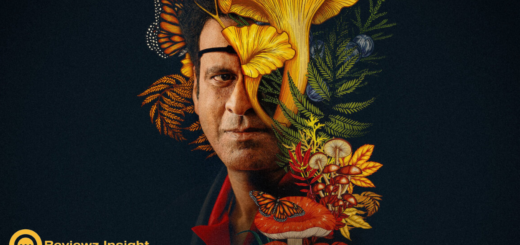Revisiting Asur 2: Mythology Meets Murder

Asur 2 continues the compelling journey that began with its debut season, blending intense psychological drama with ancient Indian mythology. The Voot Select original, directed by Oni Sen and written by Gaurav Shukla, pushes the boundaries of genre storytelling in Indian web content. Through its second season, the series builds a tense, fast-paced narrative that examines the duality of good and evil, the chaos of genius, and the philosophical undertones of dharma and karma.
Plot Overview: A New Chapter of Darkness
Asur 2 picks up the threads left hanging in the explosive finale of the first season. The serial killer, Shubh Joshi—played with chilling conviction by Abhishek Chauhan—returns with deadlier intent. He does not just kill; he orchestrates a larger narrative rooted in myth, science, and ideology. This time, he transforms into a symbol of chaos and technological control, orchestrating mass psychological manipulation through artificial intelligence and social engineering.
The CBI, led by Dhananjay Rajpoot (Arshad Warsi) and Nikhil Nair (Barun Sobti), finds itself overwhelmed by a killer who seems to stay ten steps ahead. Shubh dismantles systems, not just individuals. He taps into public fear, morality, and conscience. Every murder carries philosophical weight, every clue traces back to ancient scriptures, and every decision tests ethical limits.
Characters: Deeper Layers and Moral Ambiguity
In Asur 2, the creators designed characters with sharp complexity and moral dualities. Dhananjay Rajpoot, once firm in his convictions, now struggles with guilt and vengeance. Arshad Warsi portrays him with quiet intensity and emotional weight. He chases Shubh not only to stop the killings but also to resolve his own inner conflicts. He abandons bureaucratic processes and embraces unconventional tactics, driven by a personal vendetta and a sense of justice.
Barun Sobti’s portrayal of Nikhil Nair anchors the emotional core of the show. Nikhil, caught between fatherhood and national duty, represents the human cost of genius and ambition. His intellectual brilliance puts him on par with Shubh, yet his personal flaws make him tragically relatable. Sobti balances empathy with paranoia, and his breakdowns inject realism into the narrative.
Shubh Joshi evolves into one of the most terrifying antagonists on Indian screens. Unlike typical villains, Shubh does not seek money or power. He believes in karmic justice, filtered through a corrupted lens. He derives inspiration from mythology, especially the concept of “Kaliyug”—the age of darkness. Abhishek Chauhan delivers his lines with eerie calm, exuding menace through subtle expressions and philosophical clarity. He does not shout; he whispers terror.
Supporting characters like Nusrat (Ridhi Dogra), Rasool (Amey Wagh), and Kesar (Gaurav Arora) contribute to the layered storytelling. Each has their personal motivations and emotional stakes. Their journeys cross the fine line between loyalty and betrayal, science and spirituality, control and chaos.
Mythology as a Mirror: The Philosophical Underpinnings
The makers of Asur 2 draw heavily from Vedic and Puranic texts to build their psychological framework. They avoid superficial references and dig into the philosophical core of Indian mythology. The narrative juxtaposes modern crime-solving with ancient metaphysical questions. The series raises crucial questions: What defines evil? Can society define righteousness? Is technology a modern Asura?
Shubh’s belief in karmic balance and cosmic disorder does not stem from fiction. He pulls ideas from scriptures like the Bhagavad Gita and Shiva Purana, twisting them to justify mass murders and systemic breakdowns. He sees himself as the chosen Asura, sent to destroy the illusion of order.
The creators avoid glorifying mythology. They use it to challenge contemporary institutions. The judiciary, police, and media fall under scrutiny. The show suggests that society breeds its own demons when it ignores philosophical depth and focuses solely on mechanized justice.
Technology as Weapon and Religion
In Asur 2, the antagonist wields not just religious ideology but also digital tools. Artificial intelligence plays a central role in spreading chaos. Shubh uses deepfakes, hacking, surveillance, and social engineering to disrupt society. He manipulates public sentiment through misinformation, pushing communities into violent frenzies. The digital world does not merely assist his crimes—it becomes the crime scene itself.
The series presents a chilling reflection of the real world, where algorithms and data decide perception. Asur 2 challenges viewers to consider whether the human mind remains the most dangerous weapon—even in a digitized world. By turning digital mediums into extensions of his evil, Shubh exposes the fragility of truth in an era driven by screen narratives.
Direction, Screenplay, and Pacing
Oni Sen directs Asur 2 with visual elegance and narrative tightness. He uses symbolic imagery and contrasting tones to explore deeper emotions. Sacred locations turn into battlegrounds of logic and belief. Color palettes change from earthy to steel as the story shifts from spiritual to technological landscapes.
The screenplay avoids lazy exposition. Writers trust the audience to follow layered clues and character arcs. Flashbacks blend seamlessly with present-day sequences. Dialogue stays rich in metaphor but never sounds theatrical. The pacing keeps tension alive, moving swiftly between emotional drama and cerebral crime-solving.
Cinematography and Score
The camera captures both intimacy and enormity. Scenes inside interrogation rooms feel claustrophobic, heightening psychological stress. Aerial shots of ghats and mountain temples lend spiritual gravitas. Shadows play a crucial role in visual storytelling, often revealing more than dialogues.
The background score composed by Dharam Bhatt amplifies the show’s eerie atmosphere. It avoids melodrama and opts for subtle tension-building. Ambient chants mix with industrial sounds to reflect the show’s central themes of spirituality versus science.
Critical Reception and Audience Impact
Asur 2 received widespread acclaim for its writing, performances, and ambition. Viewers appreciated the intellectual rigor and emotional honesty in the storytelling. Critics praised its willingness to push genre boundaries in Indian streaming content. Many called it India’s answer to True Detective or Mindhunter, with a cultural twist.
However, the show also sparked debates. Some questioned its philosophical interpretations. Others found the violence and bleak outlook disturbing. Despite the polarizing opinions, Asur 2 succeeded in starting conversations that extended beyond entertainment.
Legacy and Potential Future
Asur 2 established a new benchmark for Indian psychological thrillers. It demonstrated that Indian mythology and modern storytelling can coexist without losing depth or accessibility. The series carved a space where intellect, morality, and suspense thrive in equal measure.
Rumors suggest a possible Asur 3 could explore deeper ideological wars, possibly linking mythology with politics or environmental decay. The creators laid enough groundwork in Season 2 to evolve the narrative further. If future installments maintain the same creative discipline, the Asur franchise could become a landmark in Indian digital storytelling.
Conclusion
Asur 2 does not just narrate a story; it constructs a psychological and philosophical labyrinth. It dares to question the pillars of civilization by invoking ancient wisdom and modern chaos. With stellar performances, rich writing, and visionary direction, the show transforms murder mystery into a meditation on morality. It compels viewers to confront uncomfortable truths: the Asura does not just exist outside. He lives within.













